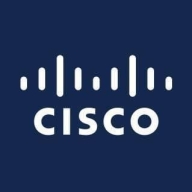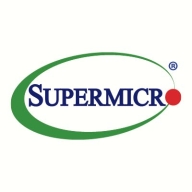

Supermicro SuperBlade and Cisco UCS B-Series compete in the blade server market. Cisco UCS B-Series seems to have the upper hand due to advanced management features and scalability, although Supermicro SuperBlade is favored for its pricing and support.
Features: Supermicro SuperBlade is notable for its high-density design, customizable configurations, and efficient power usage. Cisco UCS B-Series offers integrated management capabilities, scalable architecture, and robust performance.
Room for Improvement: Supermicro SuperBlade could enhance its integrated management features, scalability options, and improve its performance metrics. Cisco UCS B-Series may benefit from simplifying its complex interface, further reducing initial costs, and shortening deployment times.
Ease of Deployment and Customer Service: Supermicro SuperBlade provides flexible deployment and personalized customer support tailored to individual needs. Cisco UCS B-Series ensures streamlined deployment through its cohesive management suite, affording quicker setup and management processes.
Pricing and ROI: Supermicro SuperBlade is appreciated for lower initial costs and favorable ROI, aligning with budget-conscious users. Cisco UCS B-Series, with higher initial setup costs, offers substantial value over time through advanced features and reliable long-term operation.
| Product | Market Share (%) |
|---|---|
| Cisco UCS B-Series | 7.3% |
| Supermicro SuperBlade | 7.6% |
| Other | 85.1% |


| Company Size | Count |
|---|---|
| Small Business | 20 |
| Midsize Enterprise | 15 |
| Large Enterprise | 41 |
Supermicro SuperBlade delivers innovative computing performance and efficiency, perfect for data-intensive tasks. With its modular design, it optimizes space and power, providing a flexible and scalable infrastructure for demanding business workloads.
Supermicro SuperBlade is specifically engineered for modern data centers needing high-density computing. It offers a compact, modular architecture that simplifies system management and enhances agility. It integrates seamlessly with cloud and virtualization technologies, supporting diverse applications and workloads. Its design focuses on reducing operational costs while achieving peak performance. Users appreciate its balance of power efficiency and high computing capacity.
What are the key features of Supermicro SuperBlade?Supermicro SuperBlade is widely implemented in sectors such as finance, healthcare, and research where high computational power and storage are critical. In finance, it's used for real-time analytics and transactions. Healthcare facilities use it for patient data analysis and complex simulations, while research institutions leverage SuperBlade for simulations and data-intensive research tasks. Its adaptability allows enterprises to efficiently meet technical requirements unique to each industry.
We monitor all Blade Servers reviews to prevent fraudulent reviews and keep review quality high. We do not post reviews by company employees or direct competitors. We validate each review for authenticity via cross-reference with LinkedIn, and personal follow-up with the reviewer when necessary.